The iPhone 4S offers better camera specs than previous iPhones, but does it capture better-looking stills and videos than the best Android phones? Let’s find out.
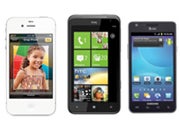 By now, you've probably heard rumblings about why point-and-shoot cameras are supposedly doomed: Smartphones are the mainstream cameras of choice; the iPhone is the most popular device for uploading photos to Flickr; and all of the latest phones--Apple's new iPhone 4Sincluded--have camera specs listed front-and-center as core features.
By now, you've probably heard rumblings about why point-and-shoot cameras are supposedly doomed: Smartphones are the mainstream cameras of choice; the iPhone is the most popular device for uploading photos to Flickr; and all of the latest phones--Apple's new iPhone 4Sincluded--have camera specs listed front-and-center as core features.But the sacrifices you have to make when using a phone as your main camera are well documented, too. You won't find optical zoom lenses, big sensors, high-quality glass, or manual exposure controls in a smartphone camera. For most people, the compromises are greatly overshadowed by the fact that a smartphone is always in their pocket and that it can share photos instantly. Those two factors are a one-two gut-punch to lower-priced compact cams.
Unfortunately, camera specs for most of the latest smartphones look very similar: 8-megapixel sensors and HD video capture are standard-issue these days. Photo-retouching and -sharing features are built into every phone or are offered in the ever-expanding universe of mobile apps. If we compared smartphone cameras based on their specs alone, we'd see a 100-way tie at the top.
So let's ignore the monotonous parade of carbon-copy specs. The only way to compare smartphone cameras is to put them through their paces and examine the results--and that's exactly what we've done here. Our test cohort consists of the new Apple iPhone 4S and a handful of high-end Android phones: the Samsung Galaxy S II, the T-Mobile MyTouch 4G Slide, the Motorola Droid Bionic, and theHTC Sensation 4G.
We also tested a couple of other devices alongside these smartphones. To see how much the iPhone 4S's new camera has improved over the previous version, we included last year's Apple iPhone 4 (the black one) in our test group. And for a control subject, we used a stand-alone camera--the Nikon Coolpix P300--to see how the best phone cameras compared to a well-respected pocket camera.
 The basics of the PCWorld Labs' subjective testing procedure are as follows: We shoot a batch of test images and videos in the same lighting conditions and at the same tripod location with each camera; then we print out the test images, and a panel of five judges looks at the unlabeled printouts and unmarked video clips. The panel rates each sample on parameters such as exposure quality, color accuracy, sharpness, and distortion levels, and we tally those evaluations to assign each device an overall imaging and video score. Click here to read in-depth details about the PCWorld Labs' camera-testing procedure.
The basics of the PCWorld Labs' subjective testing procedure are as follows: We shoot a batch of test images and videos in the same lighting conditions and at the same tripod location with each camera; then we print out the test images, and a panel of five judges looks at the unlabeled printouts and unmarked video clips. The panel rates each sample on parameters such as exposure quality, color accuracy, sharpness, and distortion levels, and we tally those evaluations to assign each device an overall imaging and video score. Click here to read in-depth details about the PCWorld Labs' camera-testing procedure.Here are the results of our head-to-head tests, along with the sample images and video clips shot with each device. Again, the scores are the ones given by our panel of judges; we've provided the sample images and videos so you can view them and form your own conclusions. Judging from the radically different scores we saw from individual judges in our own subjective tests, we expect a few arguments on this one.
Overall Still-Image Quality Results
The T-Mobile MyTouch Slide 4G remains the best phone camera we've ever tested for still-image quality, but it now has some serious competition. The Samsung Galaxy SII (we used the Epic Touch 4G version for Sprint in these tests) and the new Apple iPhone 4S finished right on its heels. In fact, the results were so close in our lab tests--only 0.7 point separates the top-ranked MyTouch Slide 4G from the third-place iPhone 4S--that you could argue for any of those three phones as the best overall.
Each of the top three phones has its own strengths. Based on our judges' feedback after looking at the test images, the T-Mobile MyTouch Slide 4G took the sharpest-looking shots and had the most accurate-looking colors; the Samsung Galaxy SII captured the most evenly exposed photos with and without its flash enabled; and the iPhone 4S had an impressive lack of distortion and the most evenly balanced scores across the board for exposure, color, sharpness, and distortion. Without a doubt, the star feature of the iPhone 4S's camera is its automated white balance, which is extremely accurate.
Here are the individual scores for each category (exposure, color, sharpness, and distortion) in our lab tests for still image quality. It's important to note that each category is weighted differently to produce each camera's overall imaging score. Color accuracy and sharpness scores account for 30 percent each of the overall imaging score, exposure quality counts for 25 percent of the overall score, and distortion counts for 15 percent of the overall score.
Image Quality Category Results
Video quality was an entirely different story. The T-Mobile MyTouch 4G Slide went from first to worst, while the Samsung Galaxy SII posted the highest overall score--even better than the Nikon Coolpix P300. In low-light situations, however, you'd be much better served by the Motorola Droid Bionic (which posted one of the best scores we've seen for low-light video quality), or the Apple iPhone 4S (which continued its impressively consistent jack-of-all-trades ways with solid scores for both bright-light and low-light video).
Here's how the smartphones stacked up in our video tests.
Video Quality Results
On the next pages, you'll find the sample images taken with each camera for our exposure, color, sharpness, and distortion tests, as well as for our bright-light and low-light video tests.
Flash Exposure: Model Test Sample Shots
Click to enlarge each photo. Photos are presented in descending order by the camera's overall image-quality score.
Flash Off: Still-Life Test Shots
Click to enlarge each photo. Photos are presented in descending order by the camera's overall image-quality score.
How We Tested Each Camera
With each phone, we used a truncated version of our regular testing methodology for point-and-shoot cameras. We affixed each phone to a tripod and shot three images. All images were taken using full auto mode with no postprocessing, using the maximum resolution for each device:
1. One still-life scene with a mannequin, to rate flash exposure quality. This is the only test in which we used the phone's flash.
2. One still-life scene with a color chart and delightful random objects, to rate exposure quality and color accuracy. We used daylight-balanced 6500k lights to light the set.
3. A target chart and printed text, to evaluate sharpness and distortion levels (see the example below).
We use printouts of each image to rate each component of image quality. All test images were printed on a Fujifilm Pictrography 3500 Silver Halide Printer, and we recalibrated the printer after printing each set of test shots. A panel of five judges examined each photo and video, rating each one independently for color, exposure, sharpness, and distortion.
For video testing, we shot a moving scene twice from a tripod with each phone. While shooting each test clip, we played the same audio clip through speakers to evaluate how well each phone picked up sound. In the first test video clip, we shot in bright indoor lighting. In the second test video clip, we shot with the overhead lights turned off and a floor lamp turned on behind the camera to evaluate low-light footage.
To rate the quality of each clip, our judges viewed the videos on a 30-inch-diagonal LCD monitor calibrated to a color temperature of 6500k using a Spyder calibrator. The same panel of five judges evaluated each clip.

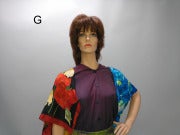
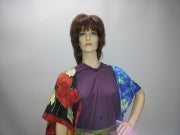

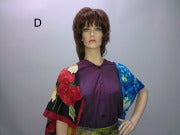
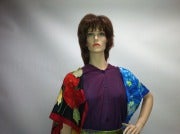















0Awesome Comments!